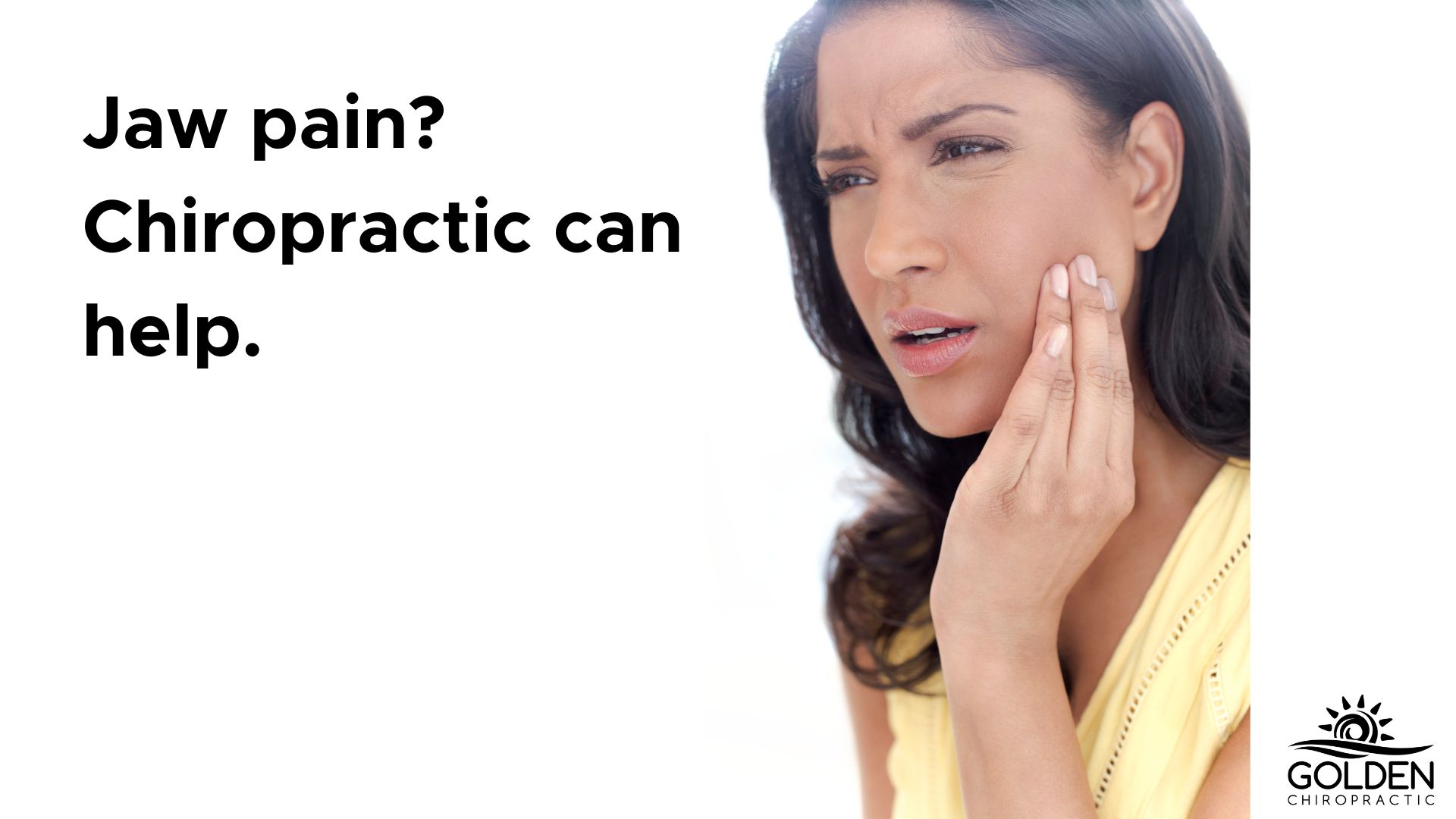
09/18/2017 by Dr. Goldi Jacques-Maynes
Pain or Clicking in Your Jaw? It May Be TMJ
Temporomandibular joint and muscle disorders, commonly called “TMJ,” cause not only aches and pains in your jaw, they can also cause a lot of frustration, anger, irritation, and sadness. TMJ and jaw pain can make it difficult to:
- eat
- speak
- sleep
The discomfort and limitations from TMJ disrupt your daily activities and make life much harder. Chiropractic care can help ease TMJ pain and improve the overall function of your jaw.
Sometimes, chiropractic care is the solution for TMJ. It helps to understand the symptoms and the causes in order to identify the best treatment.
What are TMJ symptoms?
The symptoms of TMJ can vary:
- Pain or tenderness in your jaw
- Pain in one or both of your temporomandibular joints (joints that connect your lower jaw to your skull)
- Aching pain in and around your ear
- Difficulty chewing or pain while chewing
- Aching facial pain
- Locking of the joint
- Difficulty opening or closing your mouth
- Clicking sound or grating sensation when you open and close your jaw
- Toothaches
- Headaches
- Neck aches
- Dizziness
- Earaches
- Hearing problems
- Upper shoulder pain
- Ringing in your ears
Painful TMJ disorders can occur if:
- There is stress leading to clenching your jaw or excessive chewing
- The disk erodes or moves out of its proper alignment
- The joint’s cartilage is damaged by arthritis
- The joint is damaged by a blow or other impact
How does chiropractic help with TMJ?
Typically during your chiropractic exam, we evaluate your temporomandibular gait, and assess for clicking and asymmetries in opening and closing your jaw. We will assess for muscular hypertonicity and trigger points in the muscles that open and close your jaw.
Chiropractic care can help if your jaw problem stems from more of a muscular disorder, often stress-related, and caused by excessive clenching or grinding of your teeth. These conditions make your jaw muscles go into spasm, causing pain, limited function and difficulty eating.
Treatment can include chiropractic adjustments to the cervical spine (neck), myofascial release of the dysfunctional muscles, and massage to the internal and external pterygoids and the masseter.
What can I do at home to help with my TMJ?
Home treatment for TMJ can include home exercise recommendations, as well as recommendations for eating soft foods. Sometimes taking over the counter NSAIDS to reduce inflammation and swelling will help. Ice or heat therapy may also be recommended.
Other self-care tips for TMJ
- Sleep on your side, protecting your shoulder and neck
- Relax your facial muscles, keeping teeth apart
- Jaw exercises increase mobility and healing
- Soft diet, blending foods to allow the jaw to rest
- Use ice packs to decrease inflammation and promote healing
- A warm water bottle or warm moist towel can improve function and reduce pain
- Wear a splint or night guard to prevent the upper and lower teeth from grinding together
How to eat when you’ve got TMJ
- Eat soft foods. Add yogurt, mashed potatoes, cottage cheese, soup, scrambled eggs, fish, cooked fruits and vegetables, beans and grains to your menu
- Cut foods into small pieces so you chew less. Skip hard, crunchy foods (like pretzels and raw carrots), chewy foods (like caramels and taffy), and thick or large bites that require you to open wide
- Avoid chewing gum!
Do you have a painful or stiff jaw?
Experiencing TMJ pain or other jaw-related discomfort? Schedule your appointment online. Our experienced chiropractors in Aptos will get you on the path to a life free from jaw pain.
Curious about the connection between jaw pain and neck health? Read our blog post about neck dysfunction and its effects on your body as a whole.
